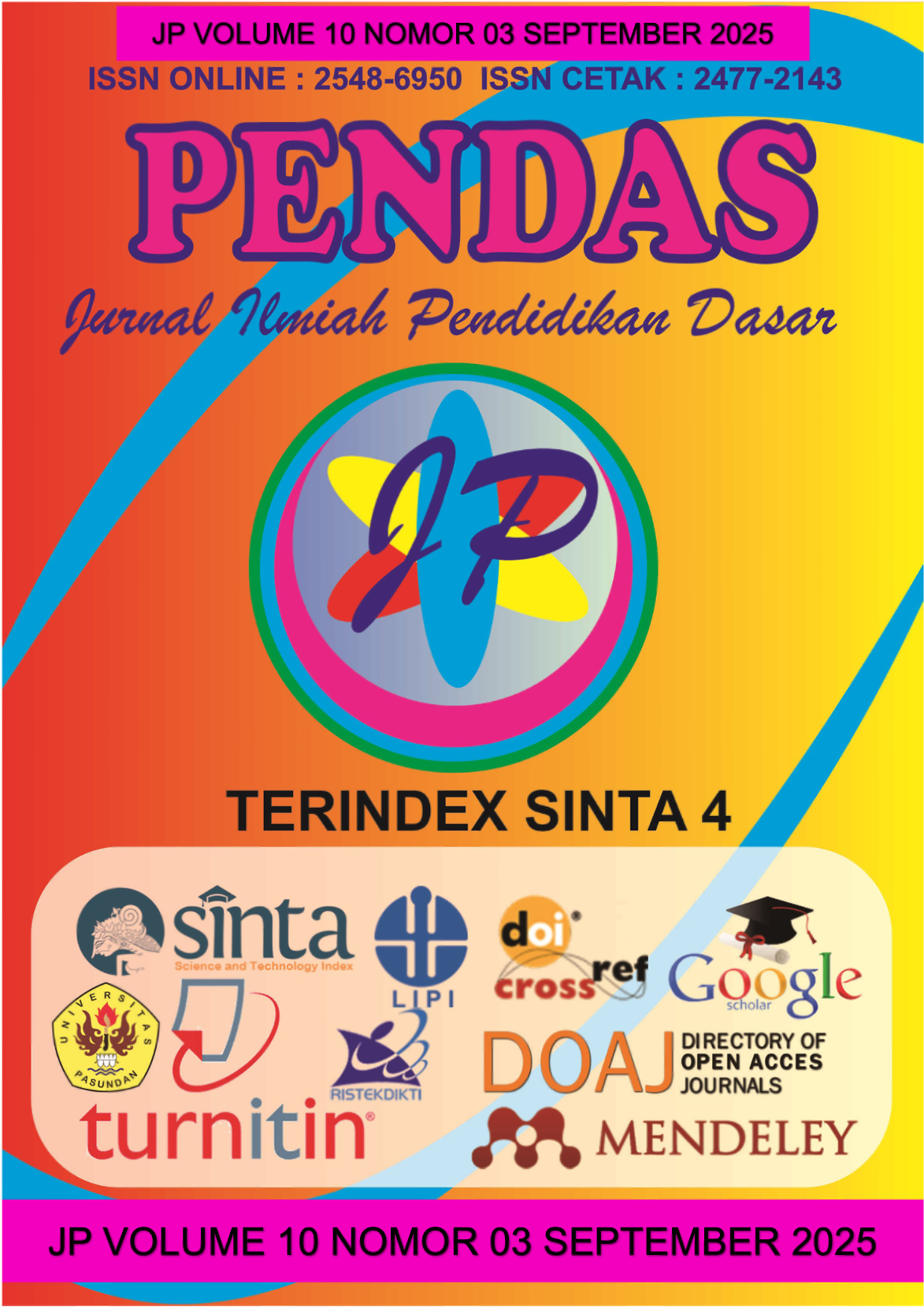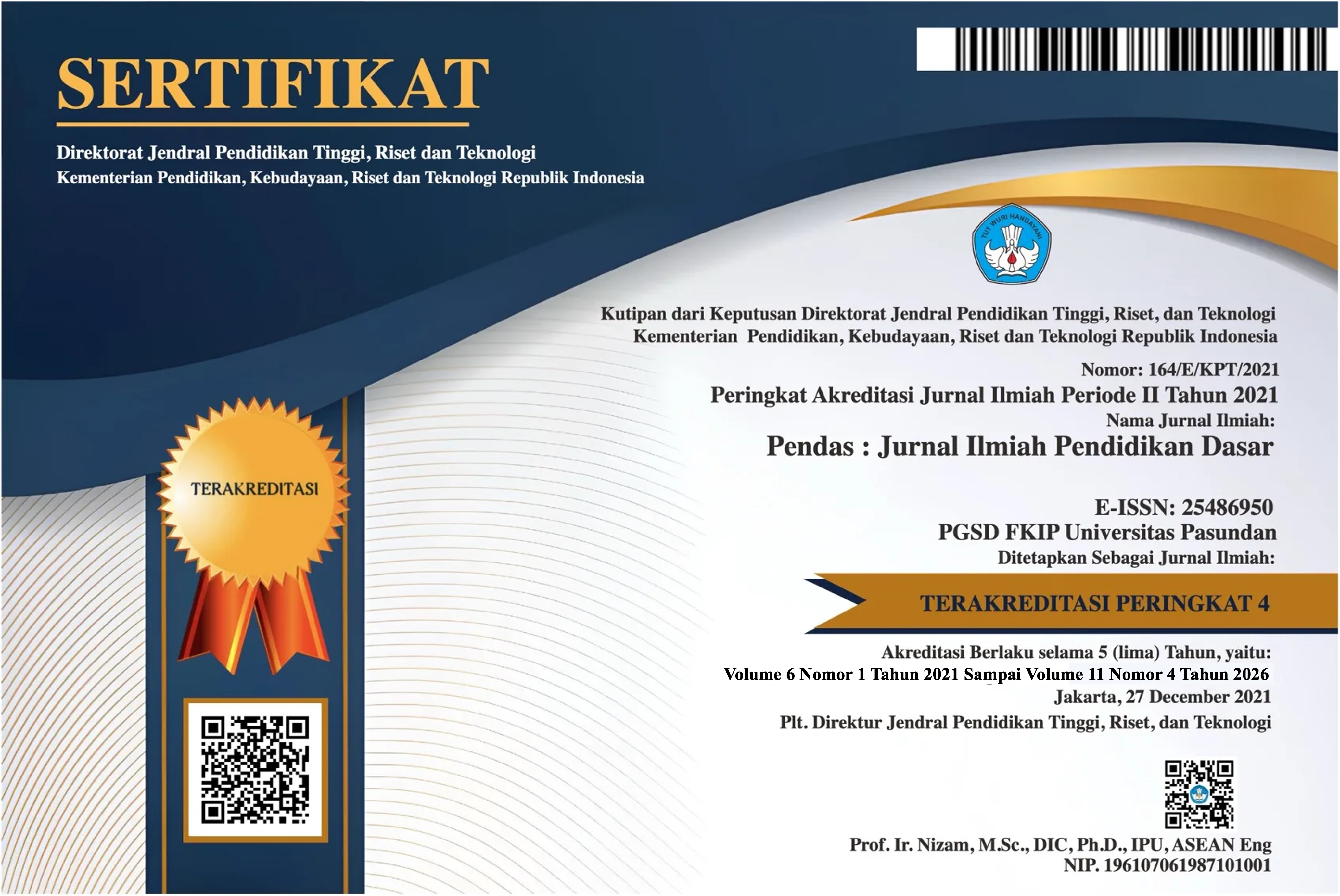AN ANALYSIS OF STUDENTS` PRONUNCIATION ERRORS AND READING ALOUD ACTIVITY
DOI:
https://doi.org/10.23969/jp.v10i03.29641Keywords:
substitution errors, English pronunciation, Indonesian EFL learners, phonological interference, L1 transfer, eading aloudAbstract
English pronunciation remains a significant challenge for Indonesian EFL learners, particularly in substitution errors where students replace target phonemes with more familiar sounds from their native language. This study investigated substitution error patterns among primary school students aged 10-12 years at a tutoring center in Medan, Indonesia, focusing on errors occurring during reading aloud activities to identify specific phoneme substitutions and understand L1 interference effects on English pronunciation accuracy. A qualitative case study approach was employed with six participants who were recorded reading level-appropriate English texts, with data analyzed using Braun and Clarke's thematic analysis framework and ELSA software for transcription support. The findings revealed three primary error categories: diphthong simplification where students consistently replaced complex English diphthongs (/əʊ/, /eɪ/) with monophthongs, vowel length and quality substitutions reflecting difficulties with English vowel distinctions absent in Indonesian phonology, and consonant voicing errors particularly affecting voiced fricatives and affricates. Notable examples included /nəʊt/ → /nɒt/ for "note," /ˈɡəʊ.ɪŋ/ → /ɡɒn/ for "going," and /ɡɪv/ → /ɡɪf/ for "give," demonstrating systematic L1 phonological interference rather than random pronunciation mistakes. The study concludes that Indonesian EFL learners require explicit, contrastive analysis-based pronunciation instruction targeting specific phonological difficulties, as without targeted intervention, these error patterns are likely to fossilize in learners' interlanguage systems. Future research should examine pronunciation development across different proficiency levels and evaluate the effectiveness of specific teaching techniques addressing identified error patterns.Downloads
References
Alghonaim, A. S. (2020). Pronunciation Challenges Faced by Saudi EFL Learners. Riyadh: King Saud University Press.
Al-Jarf, R. (2021). Common Pronunciation Errors Among Saudi EFL University Students. Journal of Applied Linguistics, 15(2), 78-95.
Angkarini, D. (2023). Phonetic Difficulties in English Learning for Indonesian Students. Jakarta: Educational Research Publishers.
Braun, V., & Clarke, V. (2006). Using thematic analysis in psychology. Qualitative Research in Psychology, 3(2), 77-101.
Brown, H. D. (2014). Principles of Language Learning and Teaching. New York: Pearson Education.
Celce-Murcia, M., Brinton, D. M., & Goodwin, J. M. (2010). Teaching Pronunciation: A Course Book and Reference Guide. Cambridge: Cambridge University Press.
Dardjowidjojo, S., & Lestari, M. (2019). Syllable Structure Transfer in Indonesian EFL Learners. Indonesian Journal of Applied Linguistics, 8(3), 456-472.
Daulay, S. H. (2020). Phonological Adaptation Strategies Among Indonesian EFL Learners. Medan: University of North Sumatra Press.
Garcia, L. M. (2021). Contrastive Analysis in Pronunciation Teaching: Evidence from EFL Contexts. International Journal of Language Education, 12(4), 234-251.
Moedjito, M., & Harumi, S. (2018). Diphthong Production Difficulties in Indonesian English Learners. TESOL Quarterly, 52(3), 178-192.
Nguyen, T. H., & Newton, J. (2020). Vietnamese EFL Students' Pronunciation Challenges. Hanoi: Vietnam National University Press.
Puspitasari, A., & Castillo, R. (2020). Vowel Length Problems in Indonesian Secondary Schools. Applied Linguistics Review, 11(2), 301-318.
Riadi, B. (2021). Central Vowel Production Among Indonesian EFL Learners. Language Learning Journal, 49(4), 445-462.
Sondang, M., Widyastuti, I., & Pratiwi, Y. (2019). Monophthongization Patterns in Indonesian English. Journal of Phonetics and Phonology, 7(1), 23-38.
Suryani, L., & Prasetyo, A. (2020). L1 Interference in Indonesian EFL Pronunciation. Indonesian Applied Linguistics Review, 4(2), 112-128.
Swan, M., & Smith, B. (2001). Learner English: A Teacher's Guide to Interference and Other Problems. Cambridge: Cambridge University Press.
Weda, S., & Sakti, A. E. F. (2018). Phonological Errors in Indonesian EFL Context. ELT Worldwide, 5(1), 72-89.
Zafar, S., & Meenakshi, K. (2022). Phonetic Training Needs for Indian EFL Learners. New Delhi: Academic Publishers India.
Downloads
Published
Issue
Section
License
Copyright (c) 2025 Pendas : Jurnal Ilmiah Pendidikan Dasar

This work is licensed under a Creative Commons Attribution 4.0 International License.



















